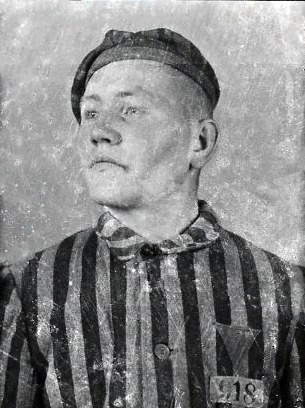Auschwitz escape 20 June 1942 refers to a bold getaway by four Polish prisoners who drove out of the camp in SS uniforms using a stolen car. It is one of the best-documented cases of an escape from Auschwitz. This article explains who they were, how the plan worked, what happened afterwards, and why historians still discuss the case. For the camp’s origins see The Origins of Auschwitz; for the site layout see The Structure of the Auschwitz Complex and Auschwitz Birkenau; for forced labour see Auschwitz Monowitz; for clandestine activity see Auschwitz resistance; for numbers and sources see Auschwitz victims and survivors.
On this page: Who escaped on 20 June 1942 · Preparation and roles · Escape from Auschwitz – the day · Aftermath and reprisals · Why this case matters · Sources and further reading
Who escaped on 20 June 1942
The four prisoners were Kazimierz Piechowski, Stanisław Gustaw Jaster, Józef Lempart, and Eugeniusz Bendera. They came from different backgrounds and held assignments that, combined, made the plan possible: observation of routines and gates, access to tools and vehicles, and contacts to obtain uniforms. Their cooperation illustrates how knowledge from different work details could be brought together under extreme risk.
Preparation and roles
Escapes from Auschwitz required precise timing and credible cover. In this case the prisoners targeted the Hauptwirtschaftslager (HWL) area after hours and prepared access with forged keys; their plan anticipated movement through store rooms, changing into SS uniforms and securing a vehicle. Each man had a defined role: acquiring keys and fuel, driving, carrying items and giving orders in German. The group rehearsed the sequence mentally based on daily guard routines and traffic through gates.
Escape from Auschwitz – the day: 20 June 1942

On 20 June 1942 the four men reached the HWL building when it was already closed. Using a previously opened coal-hatch, they got into the basement and, with forged keys, moved into the SS stores; only the weapons room had to be forced with a crowbar. They changed into SS uniforms, took weapons and headed to the nearby SS garage, where Bendera took a Steyr 220 staff car used by SS-Hauptsturmführer Paul Kreutzmann. Passing control points, confident behaviour and a consistent story helped them through the cordon: at a barrier, an assertive command in German made the guard raise the gate. They cleared the perimeter and drove away from Oświęcim. Further from the camp, they relied on careful navigation and discretion. Near Maków Podhalański the car broke down, so they continued the escape on foot and separated later to reduce the risk of capture.
Near Maków Podhalański the car broke down, so they continued the escape on foot and separated later to reduce the risk of capture.
Aftermath and reprisals
One practical outcome was that Stanisław Gustaw Jaster carried an underground report by Witold Pilecki to the Home Army in the General Government. Inside the camp, procedures at gates and garages were tightened. According to Piechowski’s later testimony in an interview, a kapo named Kurt Pachala was punished with death by starvation in Block 11, and seven SS men were transferred to the Eastern Front as punishment; his account stressed that Pachala had not actually been responsible and became a scapegoat. Retaliation against families of escapees also occurred in some cases.
Why this case matters
The case demonstrates how observation, planning and a credible cover identity could briefly defeat the camp’s control system, and how work details (vehicles, workshops, documentation) created opportunities when prisoners coordinated across assignments. It sits within a wider pattern of clandestine organisation and attempts to carry news beyond the camp.
Context: Museum publications give different totals for Auschwitz escapes. One summary notes at least 802 attempts (396 Poles) with 144 successful; a later educational session summarised 928 attempts and “close to 200” successful, with additional short-lived successes. Estimates vary by scope and methodology, but all confirm that only a fraction of attempts ended in long-term freedom.
Sources and further reading
Official museum pages: Ucieczki – Ruch oporu (Auschwitz-Birkenau State Museum) · Educational session with Kazimierz Piechowski (news) · 63rd anniversary of the first mass escape (news) · Lesson: Escape on 20 June 1942.
Read next
Auschwitz resistance · Auschwitz Birkenau · When was Auschwitz liberated? · Auschwitz victims and survivors
